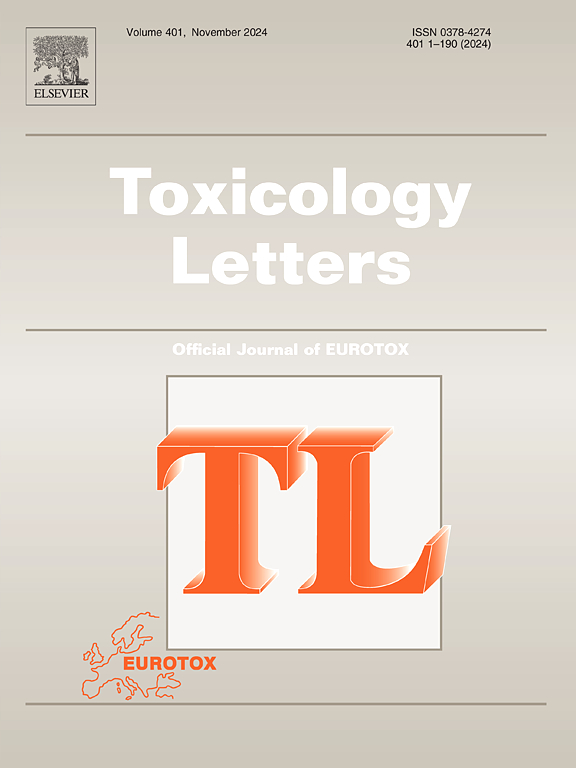苯并[b]荧蒽损伤冠状动脉并影响小鼠和脐静脉内皮细胞的动脉粥样硬化标志物
IF 2.9
3区 医学
Q2 TOXICOLOGY
引用次数: 0
摘要
接触多环芳烃(PAHs)与心血管疾病有关。多环芳烃的毒性效应多种多样,而苯并[b]荧蒽(B[b]F)对心血管的影响尚不清楚。在此,我们报告了 B[b]F 对小鼠和脐静脉内皮 EAhy.926 细胞冠状动脉和动脉粥样硬化标志物的影响。在小鼠体内,我们发现 B[b]F 会降低心脏与体重之比,影响主动脉生理机能,升高血清低密度脂蛋白和总胆固醇,增加主动脉胶原纤维和动脉粥样硬化标志物血管细胞粘附分子-1(VCAM-1)的水平,并下调与氧化应激相关的核因子红细胞 2 相关因子 2(Nrf2)。在 EAhy.926 细胞中,我们发现 B[b]F 以剂量依赖的方式抑制细胞增殖和迁移,诱导细胞周期停滞和凋亡,增加活性氧,上调 VCAM-1 水平,抑制 Nrf2 的表达。综上所述,我们的研究结果表明,暴露于 B[b]F 可能会导致冠状动脉损伤,并可能通过 Nrf2 相关信号通路诱发动脉粥样硬化。本文章由计算机程序翻译,如有差异,请以英文原文为准。
Benzo[b]fluoranthene damages coronary artery and affects atherosclerosis markers in mice and umbilical vein endothelial cells
Polycyclic aromatic hydrocarbons (PAHs) exposure is associated with cardiovascular diseases. Toxic effects of PAHs are diverse, while cardiovascular consequences of benzo[b]fluoranthene (B[b]F) are unclear. Here, we reported the impacts of B[b]F on coronary artery and atherosclerosis markers both in mice and umbilical vein endothelial EAhy.926 cells. In mice, we found that B[b]F decreases heart-to-body weight ratio, affects aortic physiology, elevates serum low-density lipoprotein and total cholesterol, increases aortic levels of collagen fiber and atherosclerotic marker vascular cell adhesion molecule-1 (VCAM-1), and downregulates oxidative stress related nuclear factor erythroid 2-related factor 2 (Nrf2). In EAhy.926 cells, we showed that B[b]F inhibits cell proliferation and migration in a dose-dependent manner, induces cell cycle arrest and apoptosis, increases reactive oxygen species, upregulates VCAM-1 level, and suppresses expression of Nrf2. Taken together, our findings reveal that B[b]F exposure may contribute to coronary artery damage and potentially induce atherosclerosis, possibly via the Nrf2-related signaling pathways.
求助全文
通过发布文献求助,成功后即可免费获取论文全文。
去求助
来源期刊

Toxicology letters
医学-毒理学
CiteScore
7.10
自引率
2.90%
发文量
897
审稿时长
33 days
期刊介绍:
An international journal for the rapid publication of novel reports on a range of aspects of toxicology, especially mechanisms of toxicity.
 求助内容:
求助内容: 应助结果提醒方式:
应助结果提醒方式:


